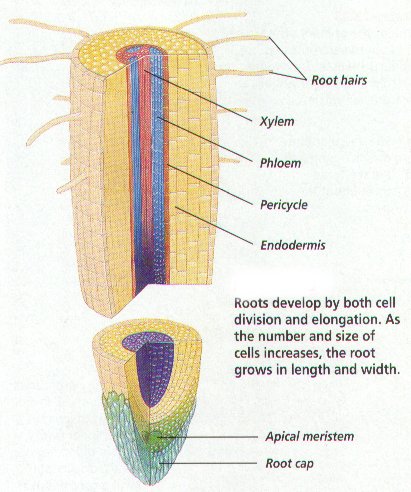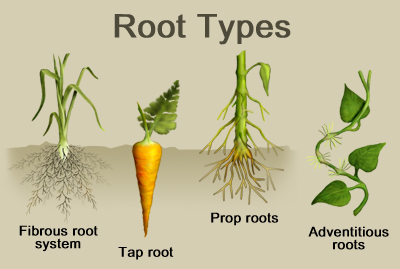Plant roots
Overview
The root is typically the part of the plant that grows into the soil, although it can be aerial in waterlogged soil. Roots have two main functions, anchoring the plant to the ground, and absorbing nutrients, water, and minerals for the plant. There are typically two types of roots, tap roots and fibrous roots, which will be explained on this page. Plant root systems can be very extensive, and are harder to study than the above ground biomass. Current methods for studying root systems include: the harvest method, isotopic analysis, root ingrowth, and rhizotrons. Roots can often have symbiotic relationships with mycorrhizal fungi.
Parts of the plant root
The root hairs is a thin hairlike structure growing from the epidermal cell. These help with the absorption of moisture and nutrients from the soil. Xylem Phloem Pericycle Endodermis Apical meristem Root cap
Citations
Gyssels, G., et al. “Impact of Plant Roots on the Resistance of Soils to Erosion by Water: a Review.” Progress in Physical Geography, vol. 29, no. 2, 2005, pp. 189–217. Cannon, William Austin. “A Tentative Classification of Root Systems.” Ecology, vol. 30, no. 4, 1 Oct. 1949, pp. 542–548. http://www.justscience.in/articles/structure-and-function-of-plant-roots/2017/07/01 Glinski, J. Soil Physical Conditions and Plant Roots. CRC Press, 2018. Russell, Robert Scott. Plant Root Systems: Their Function and Interaction with the Soil. English Language Book Society and McGraw-Hill, 1982.

